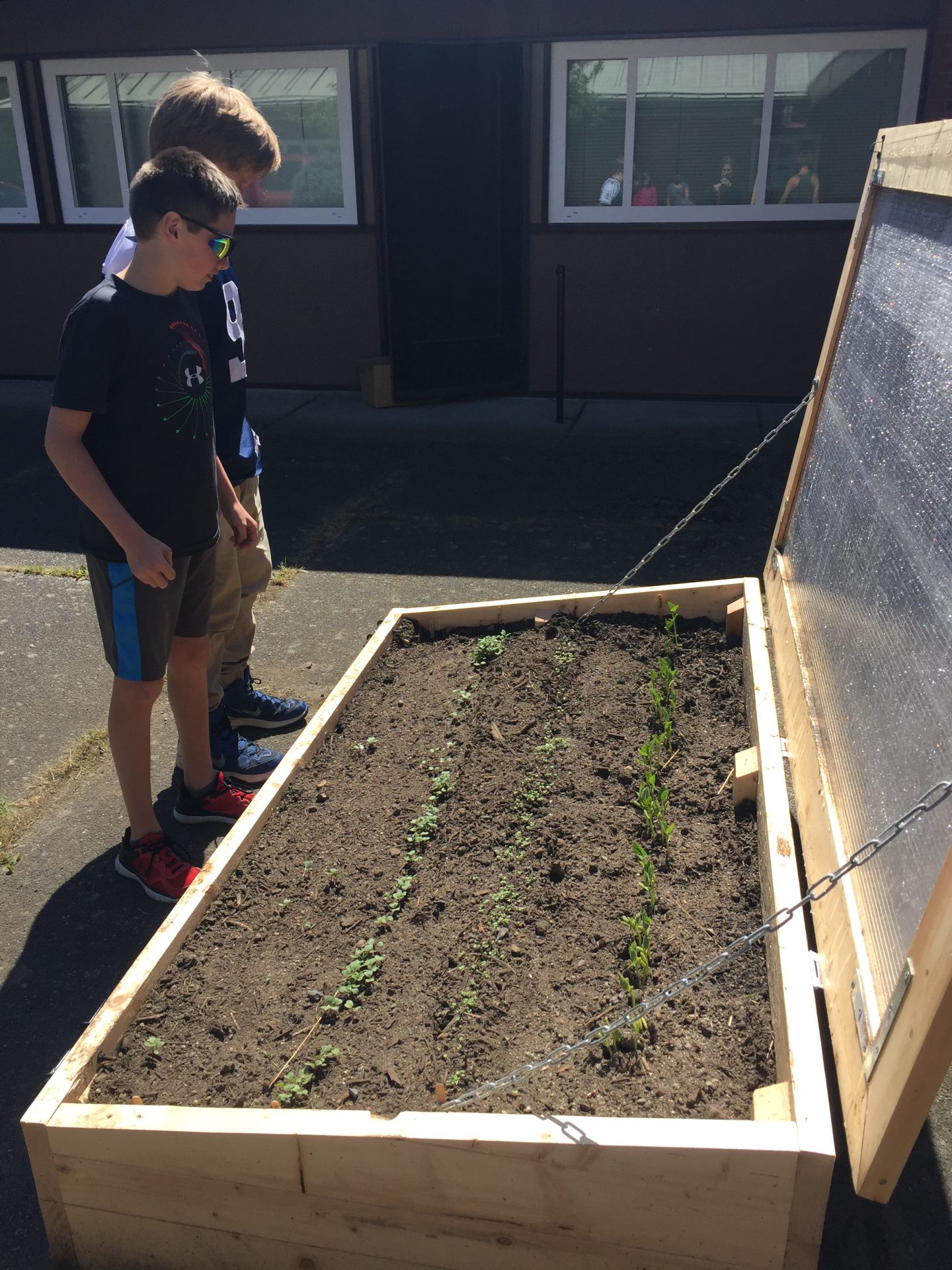Rockheights Middle School, located in the Township of Esquimalt is a school with 214 students, 54 % of whom are considered at risk in the vulnerability index. For the specific garden project, 30 students are directly involved. These students are primarily in grade six but we also have a contingent of grade seven and eight students who are volunteering their time and expertise.
The Farm to School program has helped us to connect with members of our community including but not limited to Aboriginal Elders, Esquimalt Parks and Recreation municipal workers (Parks division), staff at the Robert Bateman Centre and a representative from the Horticultural Center of the Pacific. The representative from the HCP came to Rockheights and collaborated with our school staff to help us develop the plan for the garden and how students could be engaged.

Students began the year learning about what plants need to be successful including learning about the seasons and the amount of sunlight that occurs during different times of the year. They also learned how the sunshine impacts growth. An example of the way that this was incorporated was that students made sundials out of recycled materials and used them to track how much sunlight was present at various times in the school year.
For approximately one month at the beginning of the project, our Aboriginal Skills Development teacher, worked with the students to teach them about the native plants that are growing in our local community. Students learned about medical and traditional uses for many plants including the Camus, the Thistle, and the Oregon Grape. Students integrated Language arts and art to create posters that provided botanical information and a visual representation of a variety of native plants. These posters were submitted and published in our district Aboriginal Newsletter, winter edition. In addition, one of the local Aboriginal Elders took our students to a variety of local parks showed them the plants growing in our community and taught them further information about these native plants and their uses in the Aboriginal community.

Students conducted self-guided experiments on plant growth which included; soil type (organic vs. non organic), amount of water, location, sunlight and seed depth. They used the information they learned to plant their own garden using the best techniques as found in the self-guided experiments.
There were challenges along the way including getting community support to build our garden beds. Many people showed interest but due to other commitments they were unable to invest in the time required to build the beds. Our school wood shop teacher facilitated the building of one of the beds by encouraging a group of secondary school students to build the bed. These students build a cold frame bed so that our middle school students could compare the growth of plants in a cold frame bed vs. an open air bed.
The school to school connection helped the older students to understand what the younger students needed. The second bed was built by a volunteer community member who has a connection a connection to Rockheights. Due to these delays, our garden didn’t get planted until later in the year than originally hoped. It was planted in early April. Since planting, students have checked on the garden daily and were assigned tasks in order to monitor the plants. Some of the tasks included: fertilizing, watering, thinning, weeding and opening the cold frame bed.
The focus of our garden has been a “salad garden.” The plants include: lettuce, radishes, mixed greens, mustard greens, spinach, peas, beans and green onions. These plants are quick growing plants and the students will be able to enjoy them in a salad in approximately 6-8 weeks from planting. As a part of the Farm to School grant, we have been able to access our home economics teacher and she will be helping the students to prepare the salad. In addition to the salads, our student led soup club will be using some of the greens and chives in the soup that is prepared for sale on a weekly basis.

On a field trip to the Robert Bateman Gallery, students learned about the connections between plants and animals and the importance of maintaining native plants in order to allow the local animals to thrive. In addition to this field trip, a select group of students participated in our local township “Earth Day clean-up” of invasive species. Again, this helped students to make the connection between local / native plants and our community.
Next year, we would like to grow the program and have more students involved both through educational programs and through the creation of a Garden Club. The students would like to see a herb garden and are keen to plant some native plants in the school grounds. They would also like to create a seating area in the larger garden bed area in order to take the classroom outside. Our goal is to continue this project from the beginning of school and we feel that we will be able to do so, now that our garden beds are complete. This will allow for several harvests throughout the year.


